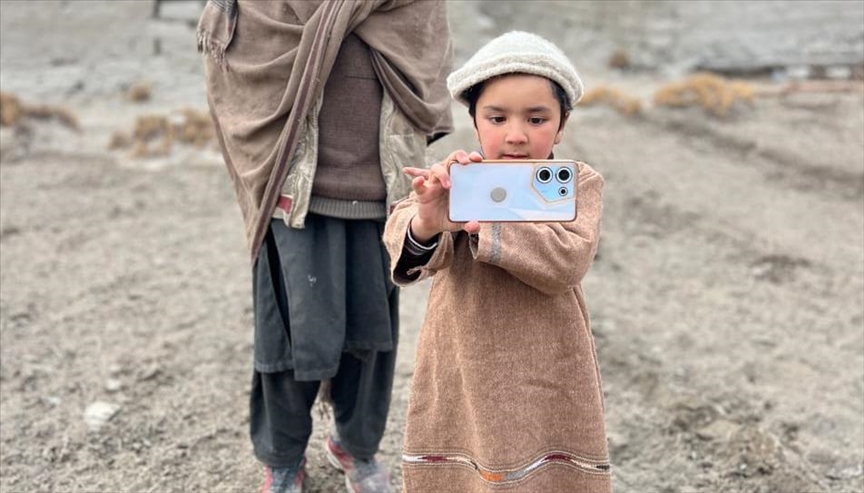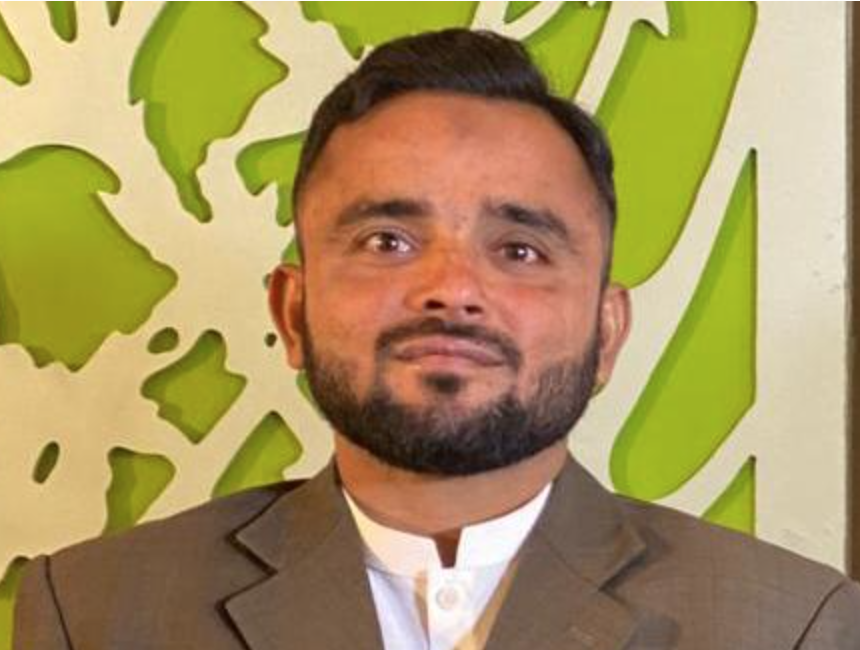SKARDU, Pakistan
The northern scenic region of Gilgit-Baltistan in Pakistan is renowned worldwide for its majestic snow-capped peaks, shimmering lakes, and vast glaciers, as well as its courageous climbers.
Situated at the convergence of three of the world's greatest mountain ranges, Gilgit-Baltistan has traditionally attracted international climbers and trekkers. However, Pakistan has yet to fully harness the region's tourism potential due to inadequate infrastructure and other amenities.
Nevertheless, Gilgit-Baltistan has nurtured numerous mountaineers and high-altitude porters of international acclaim. Among them are Samina Baig, the first Pakistani woman to conquer Mount Everest; Nazir Sabir, the first Pakistani to summit K2, the world's second-highest peak; the legendary high-altitude mountaineer Mohammad Ali Sadpara; and Sirbaz Khan, the first local climber to scale 13 out of 14 peaks exceeding 8,000 meters in height.
Adding to this esteemed roster is Mohammad Shiraz, a remarkable five-year-old who has emerged as a unique ambassador promoting the region's natural beauty alongside the daily challenges faced by its inhabitants, including issues with internet access.
Shiraz, a first-grade student, has recently created accounts on YouTube, Facebook, and Instagram. On these platforms, he shares daily updates, offering a glimpse into the unfiltered rural life of the beautiful northern region that shares its borders with China.
In just a month, his foray into social media has propelled him to stardom, captivating the online realm and amassing a global fan base that transcends borders and resonates with diaspora communities.
Hailing from Ghursay, a quaint village with a population of 2,000 nestled at the foot of Siachen, the planet's highest battleground, Shiraz invites his audience on a virtual tour of winding cobblestone streets, Persian-influenced architecture, and the vibrant local festivities.
"My aim is to showcase the allure of my village and its unique way of life to the world beyond. It's a passion of mine," shared Shiraz in an interview with Anadolu, explaining his motivation for venturing into YouTube.
His father, Mohammad Taqi, also a vlogger, serves as Shiraz's source of inspiration and guidance.
I didn't teach or encourage him to do that because he's too young. It was his own decision and action. I just gave him a little help," Taqi explained to Anadolu.
Shiraz recently uploaded and published his inaugural vlog, garnering tens of thousands of subscribers and earning a YouTube Silver Play Button in just a month.
His broken Urdu and straightforward yet playful storytelling style add depth to his vlogs, going beyond the usual beauty of the region. They offer viewers a glimpse into daily life in the eastern Karakoram mountain range in the Himalayas.
Situated near the borders of Pakistan, India, and China, this area boasts the world's second-longest glaciers, spanning an impressive 76 kilometers (47 miles).
As per Pakistan army officials, prior to 1984, there was no military presence on these glaciers. However, in April 1984, the Indian army launched a clandestine operation, seizing some key posts at the Siachen glaciers and advancing towards the eastern Karakoram mountain range. This compelled Pakistan to deploy troops to the strategic region of northern Kashmir.
Since then, both countries' forces have been stationed in Siachen, with a ceasefire in place since 2003.
Pakistan and India, neighboring South Asian nations and rivals, both lay claim to sovereignty over the entire Siachen region.
Beyond beauty, mountains and treks
Gilgit-Baltistan is situated at the meeting point of several of the world's most majestic mountain ranges - the Karakoram, Himalaya, Hindukush, and Pamir. It boasts five peaks that soar above 8,000 meters, drawing in numerous foreign and local climbers and trekkers annually.
Despite this allure, the region has not seen significant progress in terms of development and prosperity.
Although renowned for its skilled mountaineers, many local climbers have historically been relegated to working as porters for foreign mountaineers due to financial constraints and inadequate training.
"Most outsiders associate Gilgit-Baltistan with its stunning landscapes, towering peaks, and thrilling treks. However, there's a deeper side to our region that encompasses a rich blend of culture, warm hospitality, vibrant festivities, and a host of challenges," noted Taqi.
"We aim to shed light on these aspects as well. How does heavy snowfall impact our daily lives? How do we cope with bitter cold in homes without central heating? What sets our unique culture and languages apart?" he pondered.
"Furthermore, how do we continue to nurture skilled climbers and porters despite limited resources and training opportunities?"
Slow internet and poor tourism infrastructure
The region formerly known as the Northern Area and once part of the former state of Jammu and Kashmir has a rich history, marked by rivalries among the Russian, British, and Chinese empires. It has long been a destination for trekkers and adventure tourists.
With the advent of the China-Pakistan Economic Corridor (CPEC), this area has seen increased investment from banks, investors, and food chains. However, despite these developments, a significant portion of the local population remains impoverished, and the lack of infrastructure hinders tourism, especially in remote but stunning areas like Shiraz's.
Taqi, a local resident, emphasizes that Shiraz aims not only to showcase the region's beauty but also to draw the government's attention to the need for infrastructure development, which could unlock the tourism potential of areas like theirs.
Ghursay, another area in Gilgit-Baltistan, receives few tourists due to poor roads and a lack of accommodations. Improving tourism-related facilities, according to Taqi, could transform these economically disadvantaged areas into popular destinations.
The region faces challenges with internet access, primarily due to power outages, landslides, and harsh weather conditions. Only one cellular company offers 4G service across Gilgit-Baltistan, with limited 2G service from a few others due to electricity shortages.
In rural and mountainous areas, internet access is extremely limited, impacting students, online businesses, freelancers, and vloggers like Shiraz. The situation is exacerbated by environmental factors such as melting glaciers, which have damaged agriculture lands and pushed people toward digital businesses as a viable alternative.
Pakistani meteorological reports have issued warnings about the shrinking Himalayan glaciers over the past three decades, with accelerated losses in the last ten years, posing serious environmental and economic challenges.








